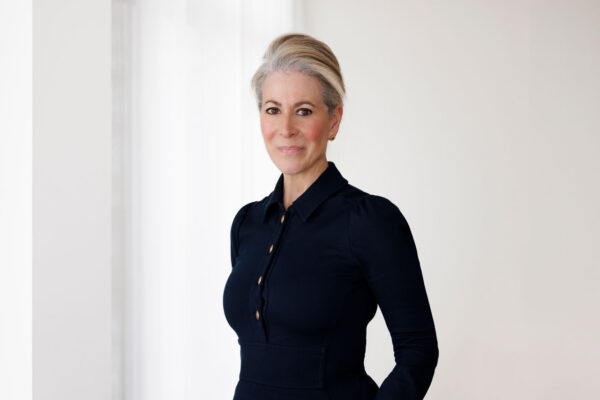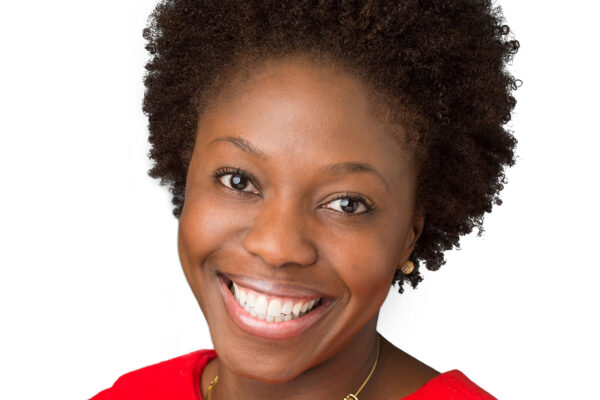
With so much focus on alternative assets, what has happened to the traditional portfolios of equities and bonds allocated in the 60/40 format made famous by the late Nobel Prize winner Harry Markowitz?
Over breakfast of fresh fruit and pain au chocolat, strategists at the wealth management arm of Swiss private bank Pictet busy themselves deciding how assets of their wealthiest clients should be allocated.
Although Pictet’s top brains – gathered for the morning meeting at the bank’s London headquarters in Mayfair – may have different ideas on how to navigate market uncertainty in 2024, they agree on one thing: the ‘balanced’ portfolio is back in fashion, now that the macroeconomic environment once more favours bonds.
“Fixed income is great, when I look at balanced portfolios,” says Cesar Perez Ruiz, chief investment officer at Pictet Wealth Management. “This is the first time the two engines” of equities and fixed income “are running together in 14 years”.
Portfolios balanced between these asset classes – a formula credited to the late Nobel Prize winning economist Harry Markowitz – returned close to 7 per cent in 2023, as clients of Pictet and other private banks flocked back to the 60/40 structure, which many observers felt had vanished for good.
This trend has been exacerbated by a relatively expensive US equity market concentrated in the ‘Magnificent Seven’ stocks, as bonds suddenly appear a safer and much better value bet, says Mr Perez Ruiz.
Preparing Trump-proof portfolios
Today’s main challenge, he believes, is positioning portfolios for the possibility of a US presidential election victory by Donald Trump in November this year, which would likely lead to transition from an “America first” to an “America alone” policy, creating uncertainty and global market volatility as US resolve to defend Taiwan and Ukraine is called into question.
It could also signal the revival of “bond vigilantes” – fixed income investors who sell assets and increase bond yields, in protest against fiscal or monetary policies which they believe create inflation. This cohort was active during the UK’s “Liz Truss moment”, where the previous British prime minister was ridiculed for ill-advised tax cuts in 2022, leaving bond markets in meltdown.
Fearing a similar event from a populist administration in the US, Pictet discourages going longer than five years in Treasury durations. The Swiss bank also expects devaluation of dollar-denominated assets if the independence of the US Federal Reserve is once more called into question by an incoming administration.
Bearing in mind this uncertainty, diversifying client portfolios into private equity is also a favoured strategy at the Swiss bank, offering “great opportunities” provided investors do not over-allocate, and regret lack of liquidity in their portfolios. “We’d be very cautious on that,” warns Mr Ruiz Perez.
“The default 60/40 is back with us,” he affirms. “But if the client can afford to have that illiquidity, they can start diversifying into private equity, real estate and private debt.”

When it comes to the bank’s younger generations, their allocation to these private assets is more nuanced, says Dina De Angelo, director at Pictet Wealth Management, responsible for client relations.
“The younger generations are all very focused on their causes. So you'll see in terms of portfolio construction, we have significant interest in thematic investing and impact investing. That generation is much closer to their wealth, because they have their particular ideas about what they want their wealth to do for them, whether it's inherited or self-made.”
Although they like this notion of investing directly, this younger generation needs more handholding than their parents when it comes to structuring portfolios and choosing investments, confirms Ms De Angelo. “You know, the trick there is explaining how private equity works and the long-term nature of that and its liquidity,” she says.
Structural shifts
Private equity specialists, not surprisingly, are keen to dismiss the return of the 60/40 orthodoxy, believing it is challenged by major structural shifts in the macroeconomic and geopolitical backdrop.
“Higher correlation between stocks and bonds lead us to believe that bonds are no longer doing their job as ‘shock absorbers’ in the portfolio,” says Paula Campbell-Roberts, New York-based chief investment strategist for global wealth at KKR, a leading private equity house managing alternative assets worth more than $500bn.
“Public equities face the prospect of lower expected asset class returns and shrinking investable universe because more companies are choosing to remain private and access alternative sources of capital to grow.”
She puts forward a 40/30/30 framework, through which KKR believes a 30 per cent alternatives allocation can help increase returns and reduce volatility. “We believe that by shifting the 60 per cent equity component to 40 per cent public stocks and 20 per cent across private equity, private infrastructure and private real estate, investors can enhance long-term capital appreciation in exchange for some liquidity,” says Ms Campbell-Roberts. “Shifting to 30 per cent traditional fixed income and 10 per cent private credit adds exposure to floating rate assets that can boost income in more volatile rate environments.”
Infrastructure boom
One major theme for private equity houses she highlights is investing in private infrastructure, where, the G20 has outlined a $15tn spending gap in its member countries between projected government spending and society’s investment needs, covering both repairs and new construction.
Some more traditional houses are also getting involved in this theme, investing in listed infrastructure securities, which unlike private equity funds, offer daily liquidity.

President Joe Biden’s signing of the $1tn Infrastructure and Jobs Act in 2021, followed by the Inflation Reduction Act of 2022, providing $900bn for a variety of initiatives, including investment into domestic and clean energy production as ample evidence of the US infrastructure construction trend, is cited by some as a major turning point for investors.
“This has been a major incentive for the roll-out of wind and solar electricity development in the US and has provided the nuclear power industry with critical support,” says Mark Ebert, infrastructure securities fund manager at Quaero Capital, a boutique investment house based in Geneva, Switzerland.
“Trump and Nikki Haley have both derided the bill, and Trump has been highly critical of the offshore wind industry,” he says. “But in discussions we have had with beneficiaries of the bill, it is highly unlikely that either candidate would attempt to repeal the bill, which benefits ‘red states’ disproportionately, though implementation of certain aspects can be delayed.”
While the US fossil fuel industry will find more support under a potential Trump second presidency, the view from Quaero is that that “renewable development and the massive investment required for upgrading electricity transmission and distribution networks in the US will continue at pace since this is regulated regionally”.
Alternative allocations
Other Swiss firms are recommending allocations of 50 per cent to equities, 35 per cent to bonds and 15 per cent to ‘alternative’ assets including gold, oil, hedge funds and private, non-listed investments linked to the energy transition.
“There was obviously a situation when interest rates were being quite strongly increased, which then has a negative effect on bond prices, so we reduced our bond allocation in that situation,” recalls Paul Whelan, client director of Swiss private bank Mirabaud, whose clients range from investors with $2m to invest to those with several hundred million. The bank currently oversees $40bn in private equity.
“When we saw that markets were starting to price in expectations that rates are going to be cut, we went back in,” focusing primarily on government bonds as a safe asset.
“While I personally believe there is a strong role for private equity to play,” involving education about liquidity and investment return patterns, “I think a lot of clients don’t fully understand that.”
Some investment houses are talking about an “evolution” of portfolios, facilitating an emergence of private assets, adding to the two “fundamental building blocks” of equities and fixed income.
“Balanced portfolios in listed equities and bonds still serve their purpose and they will never disappear as they represent a welcome liquid core to any client portfolio,” says Geraud Dambrine, chief client officer at Sienna Investment Managers, a newly formed family-owned funds house overseeing €34bn ($37bn) in client assets.
“But in the future, listed and private assets will not only sit alongside each other, they’ll be blended together to create semi-liquid hybrid strategies for retail investors.” This is a trend which some investment firms are “actively preparing for”, he says.
Like most players in the market, Sienna is defining its favoured themes to communicate to clients. “Because interest rates have increased substantially in the last 18 months, my personal favourite is private credit tied to real assets such as sustainable infrastructure, including wind, solar and storage,” says Mr Dambrine.
This evolution appears to accompany another industry trend, promoting less plain vanilla products in client allocations. “I see firms looking to go much more complex and sophisticated in their portfolio construction,” says Russell Andrews, head of wealth and asset management for Emea at technology providers FIS. “There’s recognition in the markets that returns can be hard to come by and that’s not going to be a situation that reverses anytime soon. I think we’ve seen lots of firms looking to introduce more illiquid components to their portfolios.”
Yet like Mirabaud, Mr Andrews at FIS admits that the desire of banks to move portfolios away from traditional certainties is not getting the buy-in which wealth managers desire. “In terms of flows [into alternatives], it’s not manifesting yet,” says Mr Andrews, though he believes wealthy investors will eventually “realise the benefits”.
Early stage of adoption
Most industry voices will agree that wealth managers are still at the early stages of adoption of private assets and other alternatives. According to PWC research from 2022, only 1.4 per cent of $192tn in the global wealth management sector was allocated to alternative assets. Even the vanguard of wealth firms are typically earmarking less than 5 per cent of client portfolios to alternatives, often focusing on real estate, hedge funds and commodities rather than private markets.
While some family offices and ultra-wealthy clients have bought into private markets through more exclusive institutional funds, groups such as KKR hope that the advent of a newer generation of open-ended, semi-liquid products will help wealth managers democratise access to this once restricted investment class.
The most successful wealth managers, says Mr Andrews at FIS, are those “that can really articulate to their customers, how they don’t need that level of liquidity throughout their entire portfolio, and actually, the benefits of using private markets offers potentially a better return and less volatility and a smoother ride. But that's not a process that happens overnight.”
Despite these recommendations from the Swiss banks and technology firms that service them, there is an admission that many clients are as yet still uncomfortable with high allocations to alternatives, some still plagued by memories of hedge fund losses incurred by their families during the global financial crisis of 2008 onwards.
This is why there is some renewed traction to the simplicity and certainty of the 60/40 portfolio in times of heightened market volatility and geopolitical tensions.
“There are times when you see a product in a client’s standard balanced portfolio and it doesn’t fit with what they’re trying to do,” says Mirabaud’s Mr Whelan. “Sometimes in this industry, there can be a desire to show how we can build sophisticated products, but I'm a big believer that achieving the investment objectives in the simplest way is often the best way to do it.”
After all, the wealth management industry has learned from history that when it comes to investments, what looks like a promising breakfast can easily turn into a dog’s dinner.





